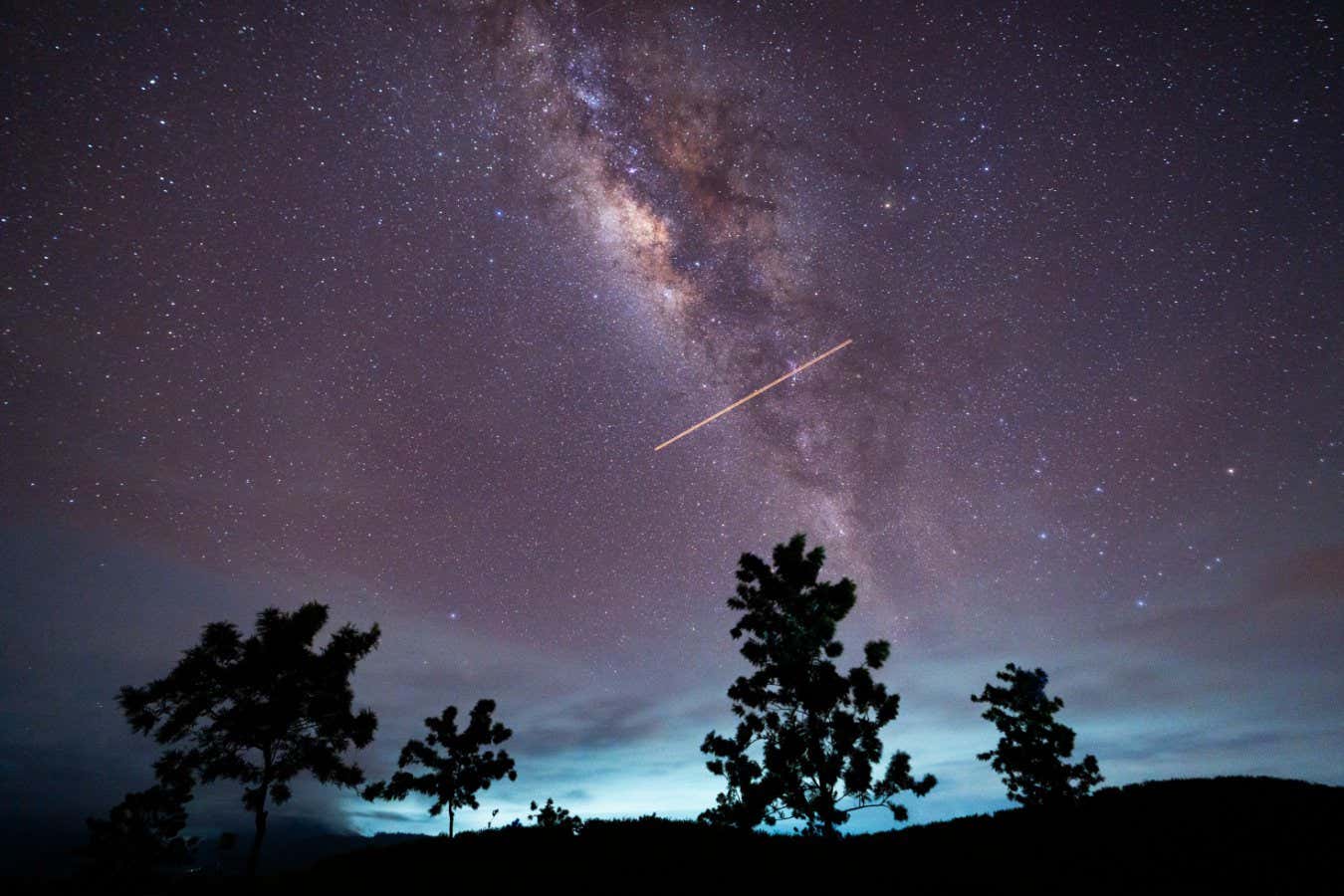The Lyrids and Eta Aquarids meteor showers can both be seen starting in late April, with viewing opportunities in both the northern and southern hemispheres
By Jeremy Hsu
15 April 2025
The Eta Aquarids meteor shower as visible in Sri Lanka in 2024
Thilina Kaluthotage/NurPhoto/ Getty Images
The Lyrids and Eta Aquarids meteor showers will soon be appearing in the night skies. This year, they will start becoming visible within days of each other in April, with the bright Lyrids peaking on the night between 21 April and 22 April and the Eta Aquarids peaking between midnight and dawn on 5 May.
What is the Lyrids meteor shower?
The Lyrids result from pieces of debris from the Thatcher comet interacting with Earth’s atmosphere and eventually disintegrating to become the bright streaks of light we see in the night sky. The meteor shower’s radiant – the spot in the night sky from which the meteors appear to radiate – is in the northern-hemisphere constellation Lyra, which contains the bright star Vega. People have been spotting the Lyrids for at least 2700 years. “The Lyrids are maybe the smallest of the major showers,” says Margaret Campbell-Brown at Western University in Canada. “The rates are not as high as most other meteor showers, but they do sometimes have a lot of bright meteors.”
Read more
Astronomers have spotted the largest known object in the universe
Advertisement
When is the Lyrids meteor shower?
This year, the Lyrids are active from 17 April to 26 April. Their peak activity occurs on the night of 21 April and is most visible just before dawn on 22 April.
How can you boost your chances of seeing the Lyrids?
The Lyrids can be best seen from Earth’s northern hemisphere in the dark hours just before dawn. The meteors will typically appear as fast streaks of light and may occasionally create a bright flash. You can expect to see around five or six meteors every hour on a typical night and as many as 10 to 20 meteors during the peak. The constellation Lyra is below the horizon for most viewers in the southern hemisphere, but the Lyrids may still be seen in more limited numbers. “There will be a bit of a moon this year, but if there are lots of bright meteors that doesn’t matter as much,” says Campbell-Brown.
What is the Eta Aquarids meteor shower?
The Eta Aquarids meteors are icy and rocky debris originally shed by Halley’s comet that eventually reach Earth’s atmosphere and disintegrate in a fiery nighttime display. The shower’s radiant is near Eta Aquarii, which is one of the brightest stars in the constellation Aquarius. “They’re a very interesting shower, producing strong outbursts some years,” says Campbell-Brown. But this year will probably have more moderate activity, she says.
